Summer 2023 Season
9 July, 2023
The summer 2023 season gives us six new isekai anime, all of them isekai tensei, along with new seasons of Hataraku Maoh-sama!! and Mushoku Tensei, while Hirogaru Sky! Precure continues, airing its 22nd episode last week.
-
Jidou Hanbaiki ni Umarekawatta Ore wa Meikyuu wo Samayou is perhaps the most famous – or infamous – of the six to begin this season, mostly for its concept. Reincarnation as animals and mythical creatures has been popular ever since the mega-hit Tensei shitara Slime Datta Ken, which spawned many imitators and played a role second only to Dragon Quest in making slimes an isekai staple. Even inanimate objects are not entirely new; fall of 2022 gave us Tensei shitara Ken deshita, with its magical sword of a title character, referred to only as ‘shishou’ by its catgirl wielder, Fran.
A sword is also an inanimate object, but at least it’s one which is well-established in a fantasy world. A vending machine is not, and much of the first episode is about otherworlders reacting to the novelty and practicality of a working, magical vending machine.
 The title character, a vending machine fan who died in a vending machine accident, is reduced to using automatic commands for ‘welcome’ and ‘too bad’, to communicate yes and no, and has an elaborate system which payments for vending machine goods into skill points. He’s attacked by frog warriors, saved by a hunter, carried to an inn during the day and the edge of town at night, and even given ‘Hakkon’ as a nickname – for a protagonist who can not even move, the first episode is quite the adventure.
The title character, a vending machine fan who died in a vending machine accident, is reduced to using automatic commands for ‘welcome’ and ‘too bad’, to communicate yes and no, and has an elaborate system which payments for vending machine goods into skill points. He’s attacked by frog warriors, saved by a hunter, carried to an inn during the day and the edge of town at night, and even given ‘Hakkon’ as a nickname – for a protagonist who can not even move, the first episode is quite the adventure.

Unfotunately, judging by the manga, it’s quite possible that this is a story which would have been better served by a short ONA or even a one-shot; the novelty makes for an entertaining story, but once it wears off, there is not much to recommend about this tale. Then again, the source material is a light novel, and it’s possible that the weakness was in that particular adaptation; it is my hope the anime will be able to build on its very strong opening.
-
If you watched Tensei Kizoku no Isekai Boukenroku last season, you’ll probably have a pretty good idea how Jitsu wa Ore, Saikyou deshita works. Reincarnation as an aristocrat is extremely common in isekai stories – mangadex lists eleven different ones with the phrase ‘Tensei Kizoku’ in the title alone; if nothing else, it allows one to follow a character in their new life since birth, and gives them an excuse to get involved in international politics as a kid in a way a peasant family simply does not allow.
The first half of the first episode tantalizes with the promise of something else, and if this series had the good fortune to air later in the week and drag out the early part a bit, I would probably be giving it a far more favorable writeup. Our protagonist, Haruto, is reincarnated into that country’s royal family, only to be abandoned because the skill system makes him appear to be a weakling. Lost in the woods, nursed by a wolf-girl who thinks the abandoned baby (because of his in truth considerable aptitude) is the demon king – one could at first mistake this for a modern Japanese take on the Romulus and Remus legend, and personally, I’d love to read such a story, even if it came with an overleveled protagonist.

Unfortunately, a margrave comes into the forest to adopt him halfway through the episode, taking along the wolf (in kemonomimi form) as a maid when she refuses to leave her new child. And the rest of it, plus the second episode is dominated by learning his new powers and developing relationships within this new family, and fending off an attack not from the royal army of the king who abandoned him, but from the neighboring empire. It’s not dull, per se – we have some cute family moments between Haruto and some younger sister – but as a fan of the genre, I’ve watched this anime before, and would have far preferred to have watched the one it looked like they were making at the start.
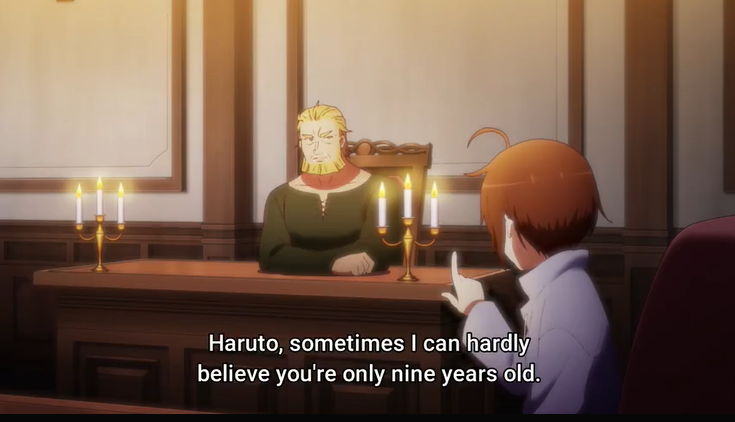
Okashi na Tensei is also a fake-out – one would initially expect a food anime, which this is not – and also involves aristocratic reincarnation. Sweets are indeed the protagonist’s motivation, and (in his past life, when a display collapsed) his cause of death, but producing them in a medieval-inspired setting is no easy feat; much of the first episode involves the nine-year-old prodigy of a protagonist, Pastry mil Mormain, obtaining the crops to make them in the first place. His father, who is the local lord, thinks he has a keen economic eye; Pas’s goal, however, is to instead create a country of sweets.
But whatever a rural aristocrat wants to grow, banditry is a problem – Pas shows his leadership chops in the second episode, organizing the defense of his village while his father is off on a cavalry raid. And these particular bandits are professional fighters who went rogue, more like an army going rogue than a few highwaymen.
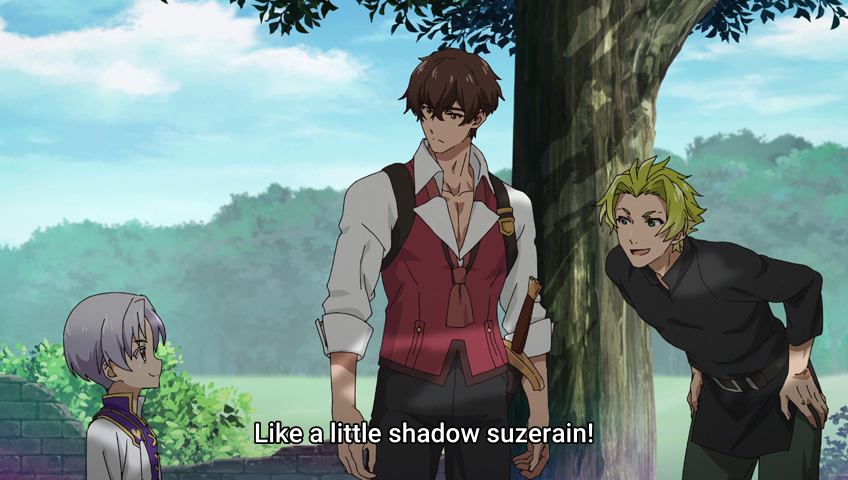

Pas does have plenty of magic powers – this is isekai tensei, his sanctification ceremony (in which magic power, in the setting, is revealed) ran super long, and his spreading a wound throughout the army does a lot to win the battle. But everything feels a lot closer-run than in Jitsu ore Saikyou; the courage and danger of that fight comes with tension, with enslavement the outcome if defeated. It’s a down-to-earth, well developed setting with impressive execution, from an author who gets how medieval life worked and uses it for inspiration. Just don’t get too excited about the sweets, this is no Isekai Shokudou in that regard.
-
Fans of villainess stories do get one show this season, with Higeki no Genkyou to Naru Saikyou Gedou Last Boss Joou wa Tami no Tame ni Tsukushimasu. Much of the show feels very typical of the subgenre, which is probably played more straight than in any existing villianess anime; yes, she was hit by a truck, yes, she played that otome game, yes, she’s the last boss and died at the end. There’s shades of Tearmoon Teikoku Monogatari as well; this villainess is also a crown princess, named Pride, and her country has a very cruel side, but as her sister, Tiara, seems to be the heroine we’re dealing with more of a palace coup situation than a revolution.
Where LasTame (a curious shortening of this cumbersome title, but the official one) distinguishes itself is partly in that Princess Pride’s game knowledge is actually justified in-setting; precognition is one of the powers associated with royalty. But mostly, it’s that the game’s Pride was not simply a love rival or a haughty bully, but an out-and-out psychopath who mind breaks all of the love interests; in a poignant moment towards the episode’s end, Pride breaks down in tears and hugs Slate, Tiara’s fiancee and her (coerced) servant; in another time, she made him kill his own mother.
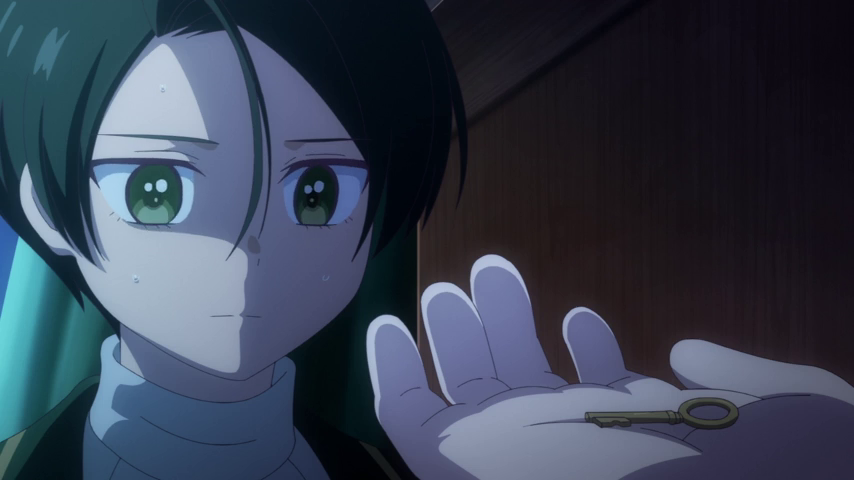
Trying to act otherwise under these circumstances is no easy feat; despite being eight years old, everyone in the palace is already frightened of her, except for her doting parents (or, to put it otherwise, the tyrannical king and queen.) It feels darker than something like HameFura; Pride offers, but is unable to free Slate; he refuses, both because his mother is a hostage and the kingdom would just take someone else in his place. Monarchy is a bigger and darker evil than any one non-monarch, even a princess, and I do wonder if this little girl will be able to turn her kingdom into something other than this nightmarish regime.
-
There is something to be said for being an aristocrat and raised there from childbirth when it comes to understanding the other world. Luciel of Seija Musou, Salaryman, Isekai de Ikinokoru Tame ni Ayumu Michi has none of these advantages, and has to pretend to be an illiterate villager who does not know his own hometown’s name, if only to explain his circumstances in a way which anyone will believe.
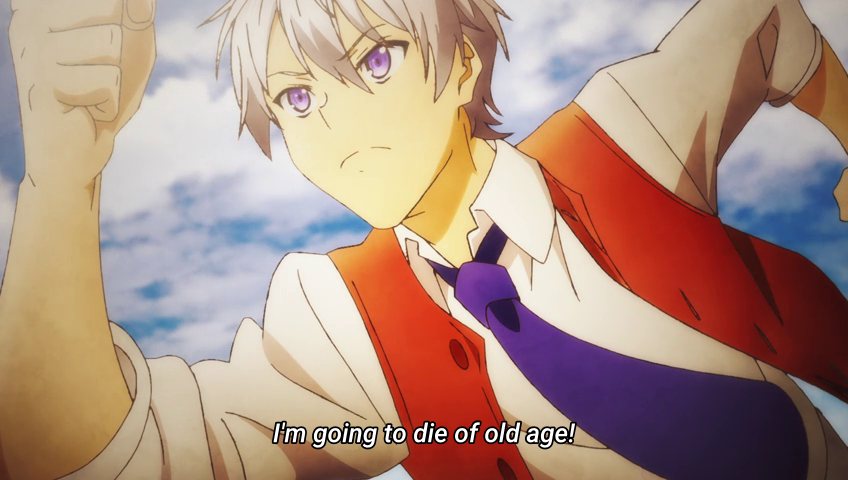
Luciel, with a relatable isekai tensei dream.
He basically gets to make his own character sheet, like in an Elder Scrolls game, and was wise, in retrospect, to select healer; it gives him free admission into a town and an awful lot of help from the healer’s guild, and Lumina, a healer he encounters, in particular – both in becoming acquainted with the world and with a place to stay and a spellbook to cram from; a responsible salaryman in his past life, he handles this challenge well. Just the kind of guy who’s way better equipped when someone gives him direction.

The unusual character class will probably end up a major draw of this story; Luciel is the main character, but he’s not capable of winning his own battles. We’ve already met a kind of frightening party of adventurers, who could use Luciel’s help, and learned that corrupt healers are a serious problem beyond the guild’s ability to police. I don’t know what to make of Seija Musou yet, but there are worse ways to end a first episode than with an audience curious where it’ll go from here.
It is not clear from the first episode of Level 1 dakedo Unique Skill de Saikyou desu that this is indeed an isekai tensei series at all, as it begins with the main character, with the normal Japanese name of Satou Ryouta, waking up in a dungeon in an adult body. There’s no death scene or anything, and I was fooled on first viewing. Alas, the manga is far more blatant about that aspect.
This anime takes the idea of item drops from dungeons to its logical conclusion, as the entire economy is based on dungeon farming; even food is usually harvested in the form of drops from monsters. Ryouta, who himself was a slime drop, is at first mistaken by his adventuring companion/senpai/waifu Emily Brown for being a human shaped peace of meat.
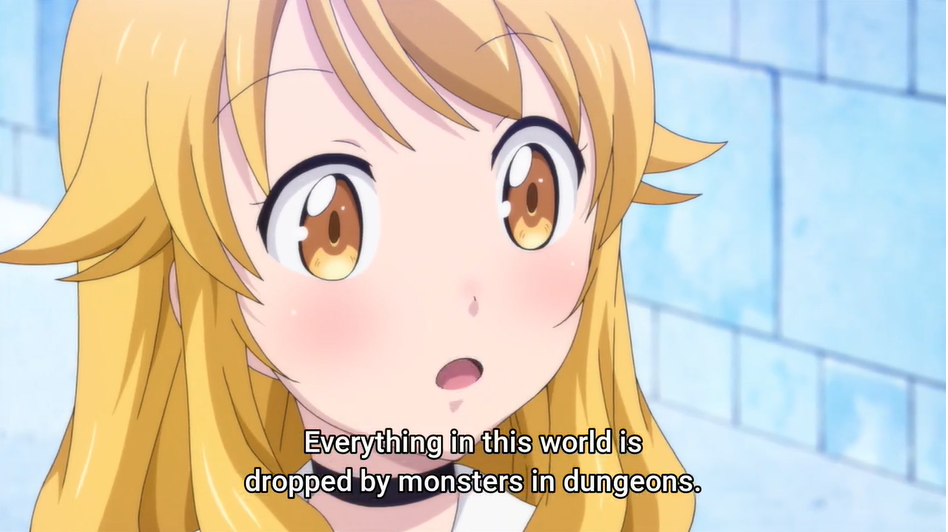
It’s very much a dungeon crawl, complete with fighting slimes with a bamboo spear (Emily using a far larger hammer, which Ryouta can not lift) and a difficult skeleton fight. The “unique skill” of the title is S-tier drops; there’s also a fair bit of culture clash with the western setting, as Emily mistakes “S tier” as falling between R and T, and can not pronounce Ryouta’s name. We even get the mysterious appearance of a “Nihoniuim” dungeon, which naturally only gives items to the one Japanese character in the setting.

It only takes a few days of adventuring for Ryouta to earn enough for a house, which he attempts to gift to Emily (who did save his life) but he, too, is talked into staying. After one episode, things are finally looking up for this guy; Emily even has a rival, as the bunny girl who was taunting him in the dungeon ends the episode with a mysterious confession.
Even if he’s still level 1.
-
Yet I have to think that the real strength of this season for isekai fans is not in the six new series, but in two of the three continuations (and possibly the 3rd, but I still haven’t got around to Hataraku Maoh-sama S1, my apologies). Mushoku Tensei: Isekai Itarra Honki Dasu was one of the defining web novels of isekai tensei as a concept, and its belated 2021 adaptation more than lived up to the hype; Mushoku Tensei 2 continues this epic tale.
Last week saw a side story focusing on Sylphie’s character, Shugo Jutsushi Fitz (or episode 00 in some sources) which opened with a nice callback to the era before truck-kun; she falls out of the sky in the traditional manner, only to break her fall with magic.

She gets roped into a bodyguard role by the royals of Asura, whose palace she landed in, and she takes this role while still looking for the others. There’s a lot of yuri pandering with the princess, Ariel, but (despite a lot of teasing, and a feigned assault) it hasn’t progressed beyond friendship.
Meanwhile, Rudeus’ quest (with its significantly better production values) continues, taking him to the frozen northern kingdoms. He’s seriously broken up about last season’s teleportation incident; no luck with family in either life, it looks like – and searching for his mother. There’s something sadly familiar about being so gloomy he alienates someone, in this case, Sara, who would later end up in his adventuring party.

That said, depression hasn’t cost him his magic, and he’s able to finish a fight with mud grizzlies with an impressive fire spell.

It was common in ‘90s isekai anime to link emotions to real power, and one is reminded of her namesake, Takenouchi, with Harewataru Sora’s breakdown in the last two weeks of Hirogaru Sky! Precure - being unable to face her friends, who she bonded with over their adventures, when faced with the loss of her powers. Or perhaps Yamato and Gabumon, or Daisuke in the Raidramon episode, would be better analogies – old abilities ceasing to work, and being forced to battle someone they looked up to, but who was controlled by the enemy. That said, I gather that this kind of thing isn’t exactly new to Toei’s other major seasonal franchise.

We meet Sora’s family for the first time when she returns home after her breakdown – including a very disappointed younger brother - while she writes an apology letter to her teammates. Captain Shalala’s Ranborg continues to rampage, and the team is not having an any easier time without their leader. But a letter from Mashiro reminds her that she’s already become a hero for her actions in the first twenty-one episodes, and it’s enough to fix her resolve and get her to rejoin the fight.

Besides, as this is precure, everyone gets purified when they win anyway. No character deaths, no Digimon Adventure tri. style cities left in ruins. Still, for a while it’s high drama, and far more seriousness than this show’s plot has shown so far – although its other strengths, like the characters, monster designs, and skyland as a whole, more than compensate for it. I honestly liked these two episodes most of any new isekai I watched this past week+, although I also liked them more than the prior twenty-one, so I can’t promise it’ll be this good going forward.
That said, I’m looking forward to it – and hoping the new entries this season will also provide plenty of entertainment as the weeks go on!